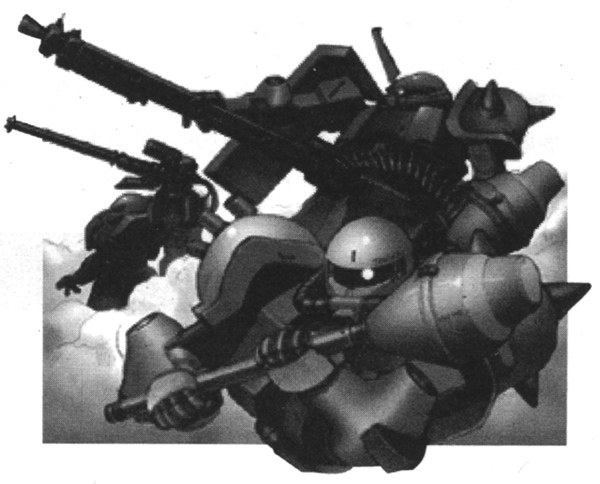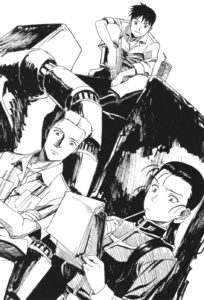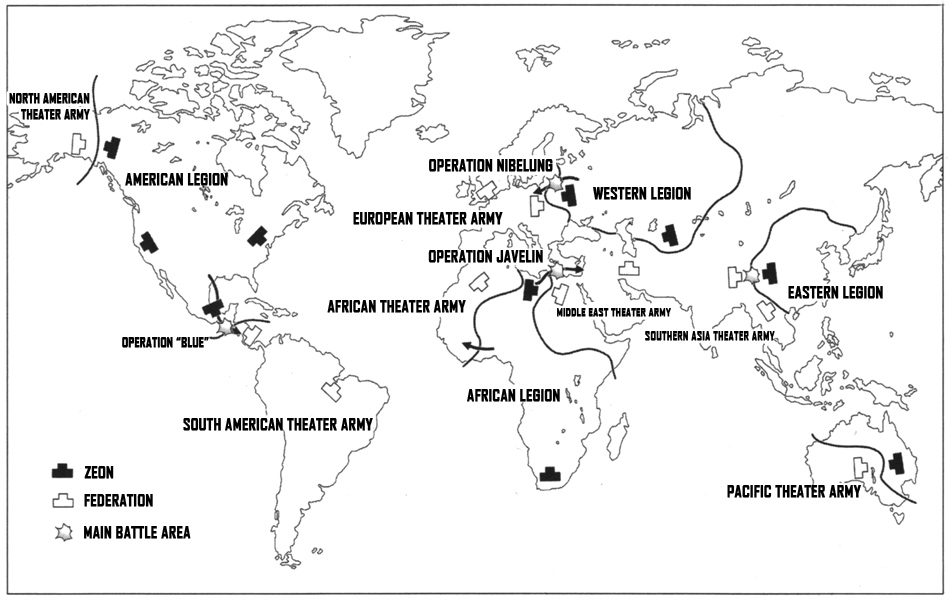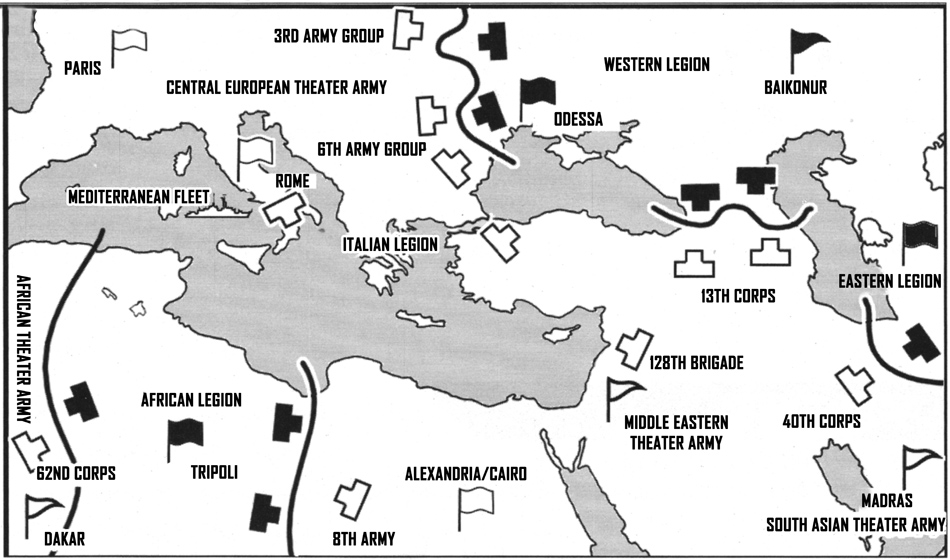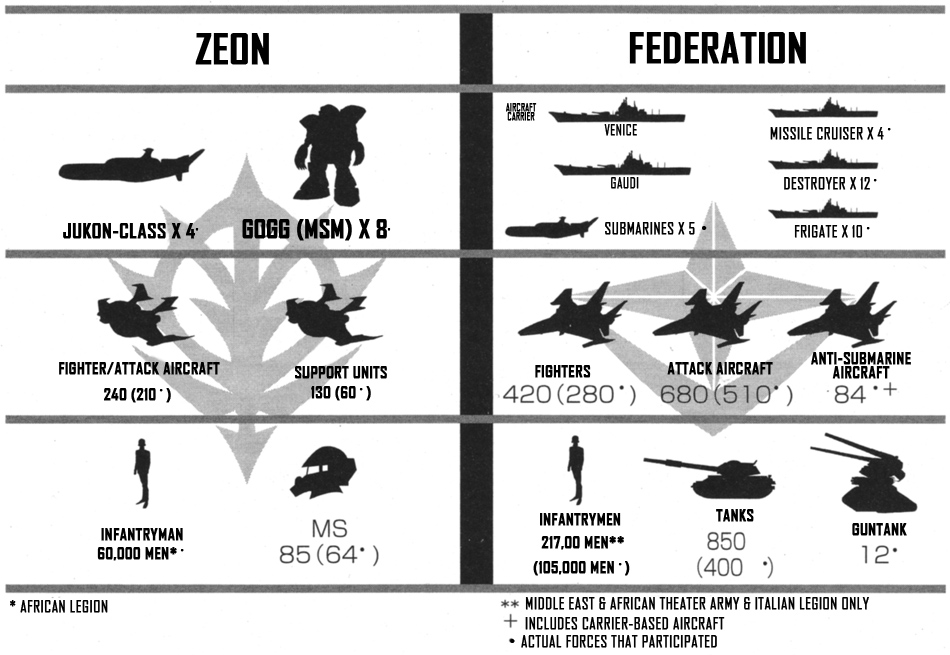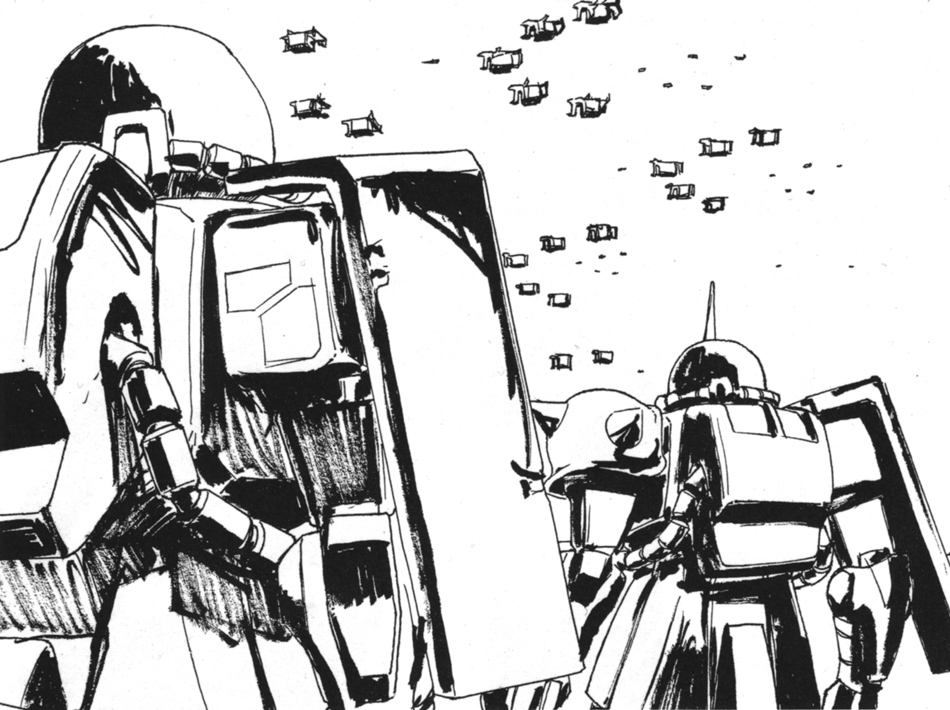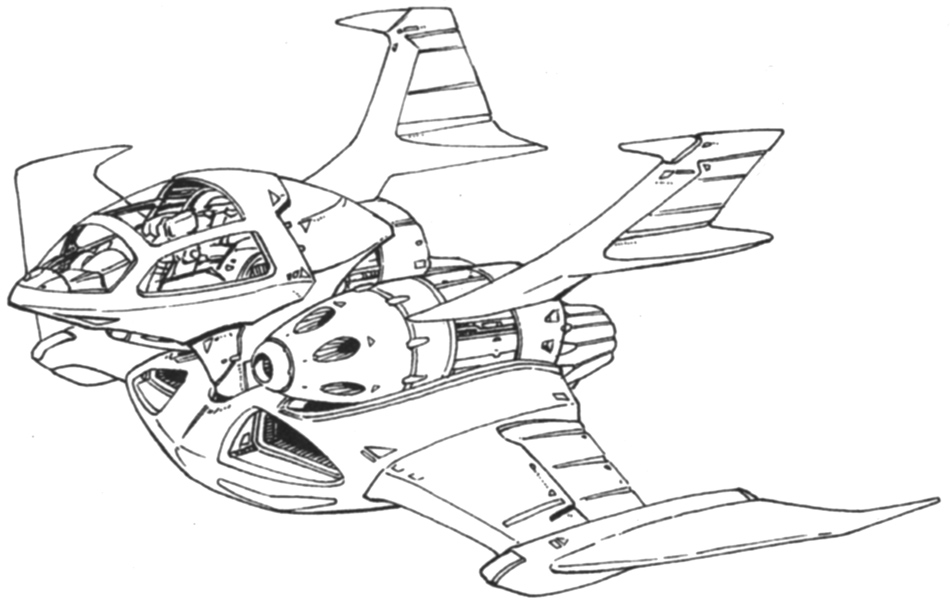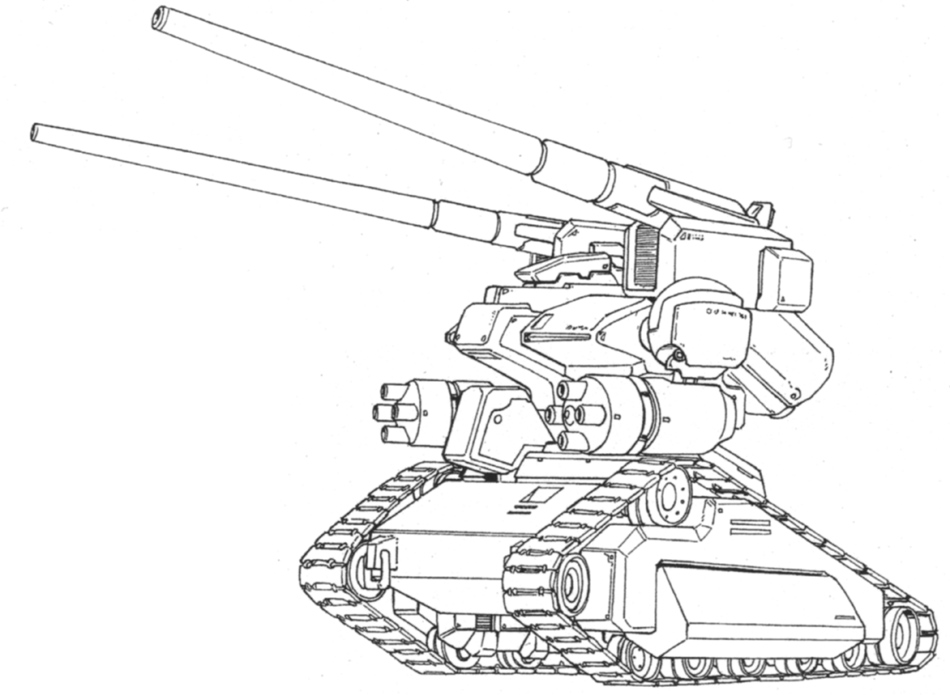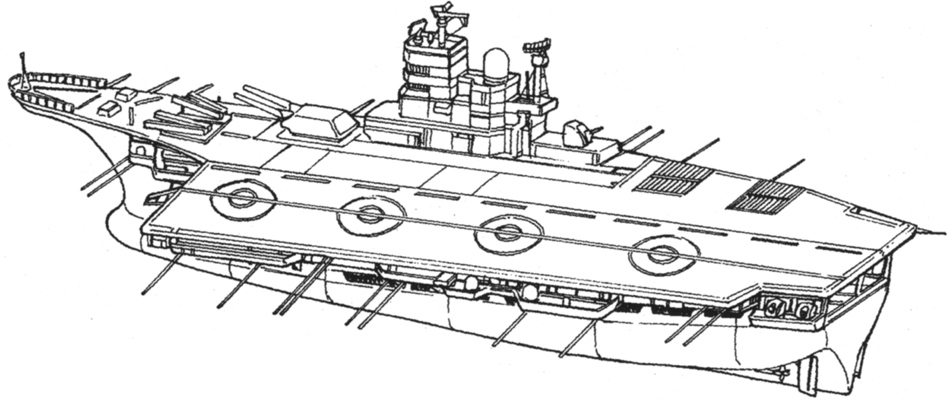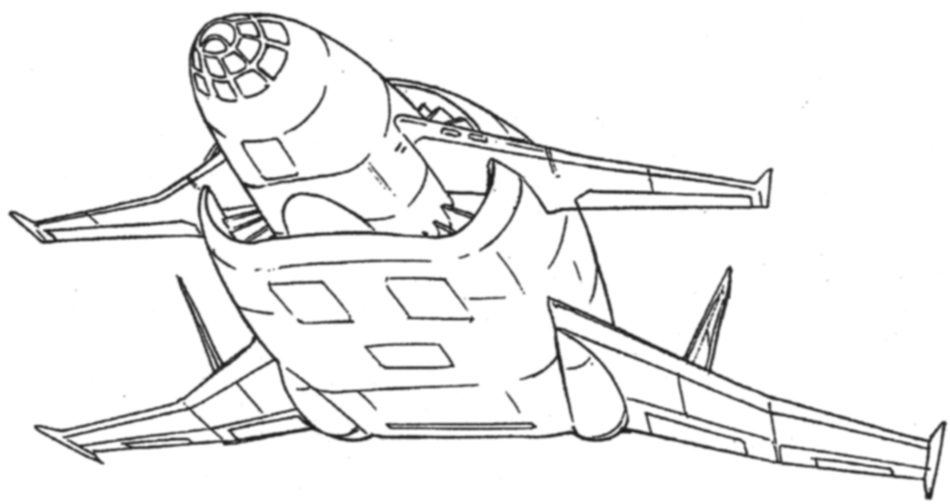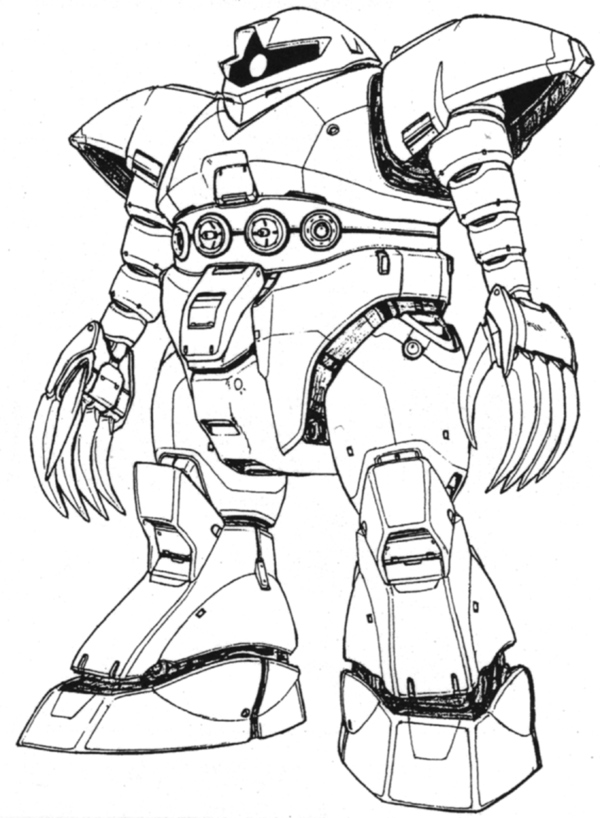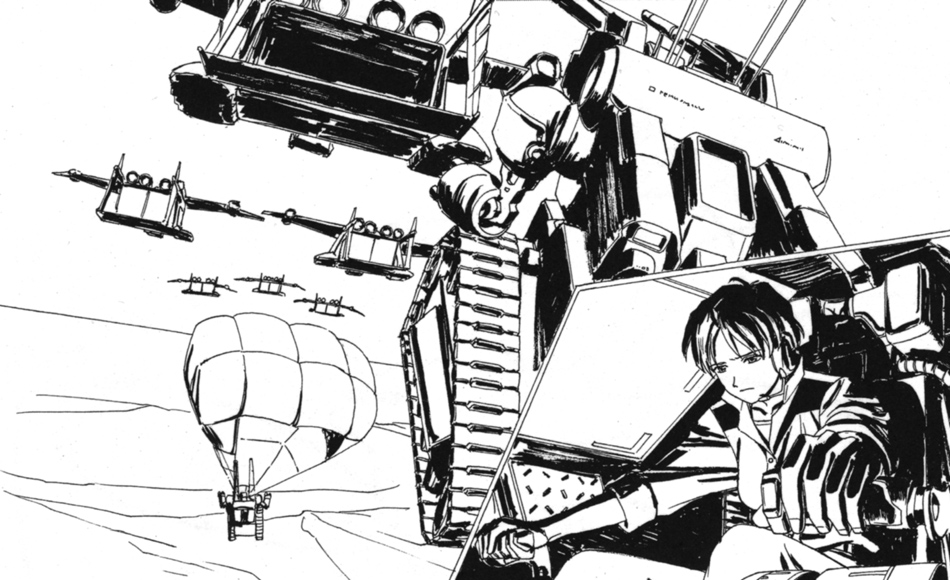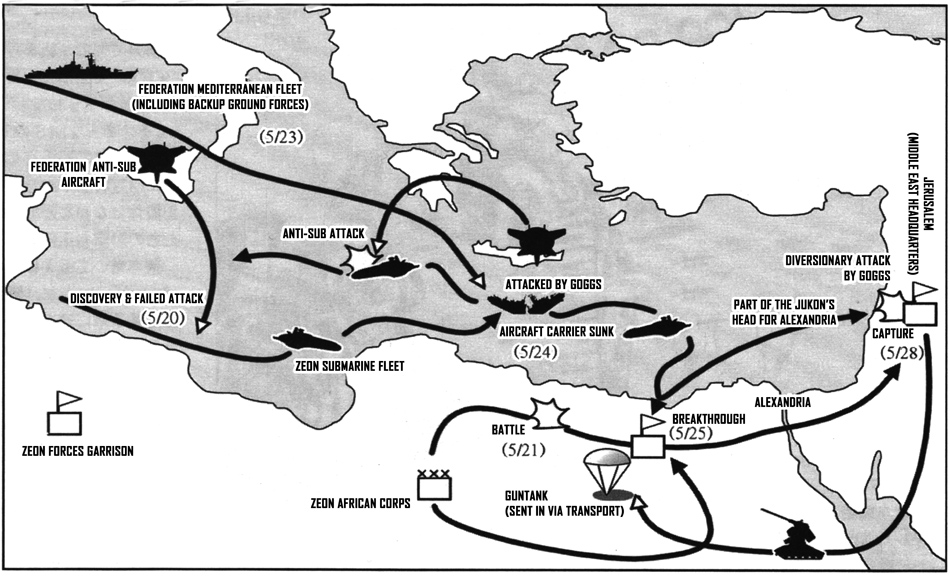MISSION 4 MEDITERRANEAN CAMPAIGN

![]()
Vree vree vree vree vree
I was on standby. In front of me, the time stamp at the bottom of the monitor turned red and an alarm began to sound.
Finally, Operation Javelin had begun!
I had been sitting in the cockpit of my Zaku J-type, absentmindedly gazing at the sea and the sand dunes. I slowly started up the idling unit.
It sounded good. At first, I’d had a lot of trouble maintaining it due to the troublesome sand, but thanks to the strenuous efforts of the mechanics and Engineering Officer Meyer, it was now in peak condition. Being on the ground had seemed strange at first, but after three weeks of on-the-ground training, I had grown to like it.
A battalion of Zaku’s took off one after another, concealing themselves in the dried out hills and valleys. I signaled my allied team from the monitor, then got my baby taking her first steps.
◆
After an hour, we had already advanced 30 klicks. The Federation units pouring out at us didn’t pose much of a threat.
“Left flank mop-up complete. Heading for battalion headquarters. Is it okay to move to the next hill? Requesting permission to advance.”
“Permission granted. Break through them one by one. Brigade headquarters is moving operation front line ahead 20 klicks.”
“Hey, hey, is that okay?”
“Who cares what grunts like us think? More importantly, don’t forget our bet. First pilot to touch the Sphinx at Gaza gets the whole pot!”
The battalion team continued their carefree transmission.
“Looks like the right flank enemy forces have started falling back… Currently, our battalion casualties are one unit with heavy damage, two units with minor damage.”
“It took a lot of money to bring those things all the way from Side 3 on the other side of the moon. Whether they’re broken down, have minor damage or heavy damage, make sure to retrieve them all!”
Such happy go lucky people.
At that time, we felt like the operation was a sure success and were feeling extremely happy.
![]()
Universal Century 0079. Another new history of battles was being added to the lands of North Africa where many historical battles unfolded. The heroes this time are the Zeon Forces for they are soldiers who came down from outer space.
As they wield their giant gods, the heroes of the past descended upon the lands of sand and their seas in search of impossible dreams.
What is Operation Trident/Javelin…?
Having gained a foothold on the Earth’s surface, the Zeon Forces began their second operation as early as April. It would be the start of a global suppression operation leading the way to the destruction of the Federation government and occupation of the planet. It consisted of a number of operations, including ones aimed at capturing a European military base as well as a “blue” operation aimed at occupying the Panama Canal. Yet, one of the greatest achievements among them was Operation Trident/Javelin, an invasion operation on the Mediterranean Sea, which began on May 21st in the Mediterranean-African Theater.
The aim of the operation is to enable joint operations by bringing together the divided African Zeon Forces and the Zeon Forces in former Russia along with the defeat of the Federation Forces in the Middle East. Furthermore, its purpose was also to organize their front lines and put together reserve forces. The Zeon Forces, which deployed countless forces on the ground, found their supplies strained early on. As expected, there was a limit for such a large force on the surface to be covered solely by supplies from outer space.
Two operations were to be carried out simultaneously, with Zeon Forces bases in Northern Africa (Tunis, Tripoli, etc.) as launch bases to carry out the operations. A ground attack operation targeting a Middle East base, otherwise known as Operation Javelin, and Operation Trident aimed at attacking from the sea.
This operation is renowned as the first combined operation in which a Zeon submarine unit participated. The Zeon submarine unit, formed at a facility seized in America, broke through the Strait of Gibraltar (which had previously collapsed with the colony drop) and entered the Mediterranean to participate in the operation.
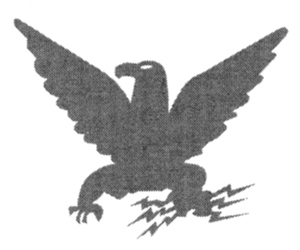

In April, the Earth Drop Operations were complete and both forces on the ground were preparing for the next move. Meanwhile in space, the Zeon Forces space fleet, which had finished supporting the drop operations, was skirmishing with the Federation as a free fleet as they resupplied their ground forces.
![]()
Having succeeded with their drop subjugation, the Zeon Forces were fully focused on managing their occupied areas during this period. They established a material transport system from secured resource areas (Russia, South Africa, etc.) to space. This included maintaining the occupied Federation bases (California, Taillevent, etc) and the establishment of an occupying government.
Meanwhile, the ground forces were organized as shown in the map above and preparations for the next phase of operations had already begun. From late April to May, “Operation Blue” (a plan to occupy the Panama Canal), Operation Nibelung (a plan to occupy Central Europe), Operation Javelin (a scheme to occupy the Middle East) and other operations were launched simultaneously.
In the map above, places where there is a star denote areas where clashes between both sides was particularly intense during this period.
![]()
Meanwhile, for those in outer space, there were no major operations at the time and as such were in a stable situation. The powers and interests of both sides forces were solely devoted to ground warfare, not space.
It was during this period that Zeon warships continuously appeared in Earth orbit to resupply their ground forces (this group of warships was called Munzo Express after the name of a Zeon colony) and the Federation Forces was conducting guerrilla-like attacks on the ships. However, the damage was severe and following the failure of Operation Hellion (May 22-23), a large-scale operation, it was covered up.
Following that, aside for a few naval battles as shown in the figure, only skirmishes with recon activities involving the colonies were conducted.

Based on the mobile suit training under a Minovsky environment from January to March, the leaders of both armed forces began exploring new aircraft and new tactics. For example, the Zeon Forces Dom, which was rolled out late in the war, began development based on the experience during this period. Newtype research was the largest among this research. In particular, the Zeon Forces quickly started researching, establishing the Flanagan Agency, specializing in this. On the other hand, it cannot be overlooked that at this time, the Federation was steadily beginning to military preparations to reclaim control of outer space with further strengthening Luna II.

Operation Trident/Javelin, which the Zeon Forces launched in the Mediterranean, was literally a “spear” that they unleashed on the axis of Asia, Africa and Europe. The Zeon Forces were now trying to conquer the lands of Africa where Caesar, Napoleon, Rommel and others all had military campaigns in the last century. Will history repeat itself forever?
Here, we’ll analyze the situation in the Mediterranean theater at the time.
![]()
The map above shows the layout of both sides forces as of mid-May (just before the start of the operation) and the placement of the senior command (military district).
As you can see from the map, the Zeon Forces believe that completing this operation will give them supremacy over the Middle East and that their forces in the Africa and Asia/European regions would be linked so they could cooperate with one another in a beneficial fashion.
Therefore, they attempted to invade the Middle East with Operation Trident, an attack on the ground in Africa and Operation Javelin, an attack from the sea. In practice, however, the cooperation between the Middle East’s Zeon Forces (under the command of Vice Admiral Dozle) and the Russian region’s Zeon Forces (under the command of Rear Admiral Kycilia) was barely conducted due to the difference in command systems.
![]()
The table below shows the forces deployed by both sides in the Mediterranean region at the time. From top to bottom, it is roughly divided into naval forces / air forces / ground forces.
As you can see from the table, the Federation still had a powerful naval force in the Mediterranean. The reason is that the Mediterranean fleet was not so damaged by the colony drop in January, and that it had not yet been touched by the Zeon Submarine Fleet.
The forces in the figure do not include Russian Zeon forces (Rear Admiral Kycilia’s forces) that did not participate in the operation.
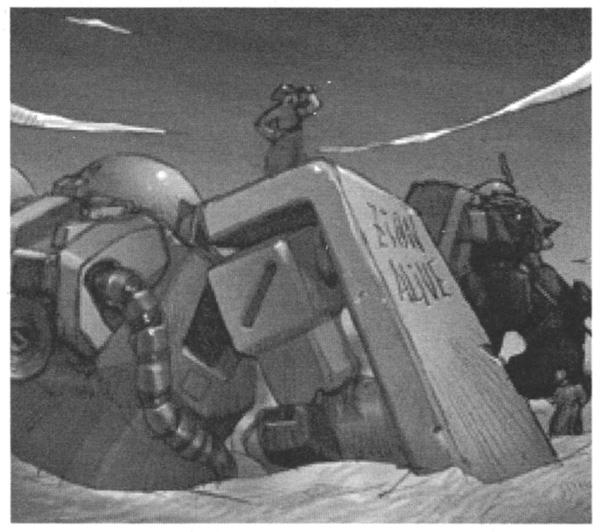

![]()
The desert is considered one of the toughest battlefields due to its harsh climate and difficult supply. As a result, the way the two sides fight in this area has become extremely characteristic.
The Zeon Forces attempted to overwhelm the regions Federation defense system with a breakthrough tactic that allowed them to infiltrate several kilometers a day thanks to the sheer size, armor and mobility of their mobile suits.
On the other hand, the Federation, which only had conventional weapons, bought time by fighting with tanks, and mortars in their encampments and tried to foil the Zeon’s attack through air strikes. With its lack of cover, the desert was known to have profound impact on aircraft. Both sides rarely used infantrymen except to capture towns and bases.

![]()
For Operation Trident/Javelin, various weapons were active in the desert and in the Mediterranean. The following are just a few examples.

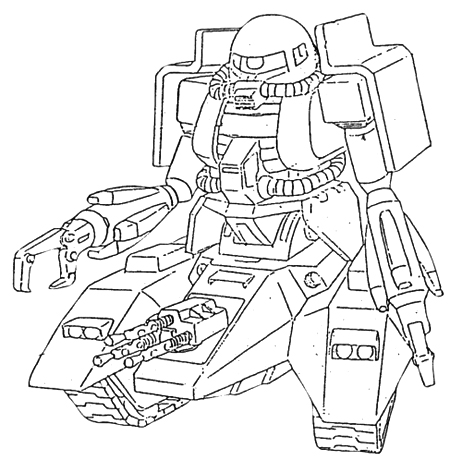
In a flat desert, if there was rough terrain to travel on to an extent, mobile suits often times didn’t have “legs.” As a result, the Zeon units in the desert were equipped with a number of strange aircraft to suit their needs. In any case, nothing changed for the maintenance teams who were annoyed by the enemy “sand” getting inside the machines.

A fighter plane of the Zeon Forces that has proven useful across other fronts. A new aircraft dedicated to ground warfare that deals with Minovsky environments. In fact, it was a weapon that is closer to an attack plane, but in the desert/Mediterranean theater, it was also useful for searching for the enemy and what not.

At the time, in the former Israeli region of the Middle East, there was a branch office of the Federation’s “V Project,” and mobile suit research and development was being conducted at a factory. At the factory, there was also a machine that served as the predecessor of the later RX-75. During a pressing stage of the battle, several of them were introduced on the battlefield for field testing.

![]()
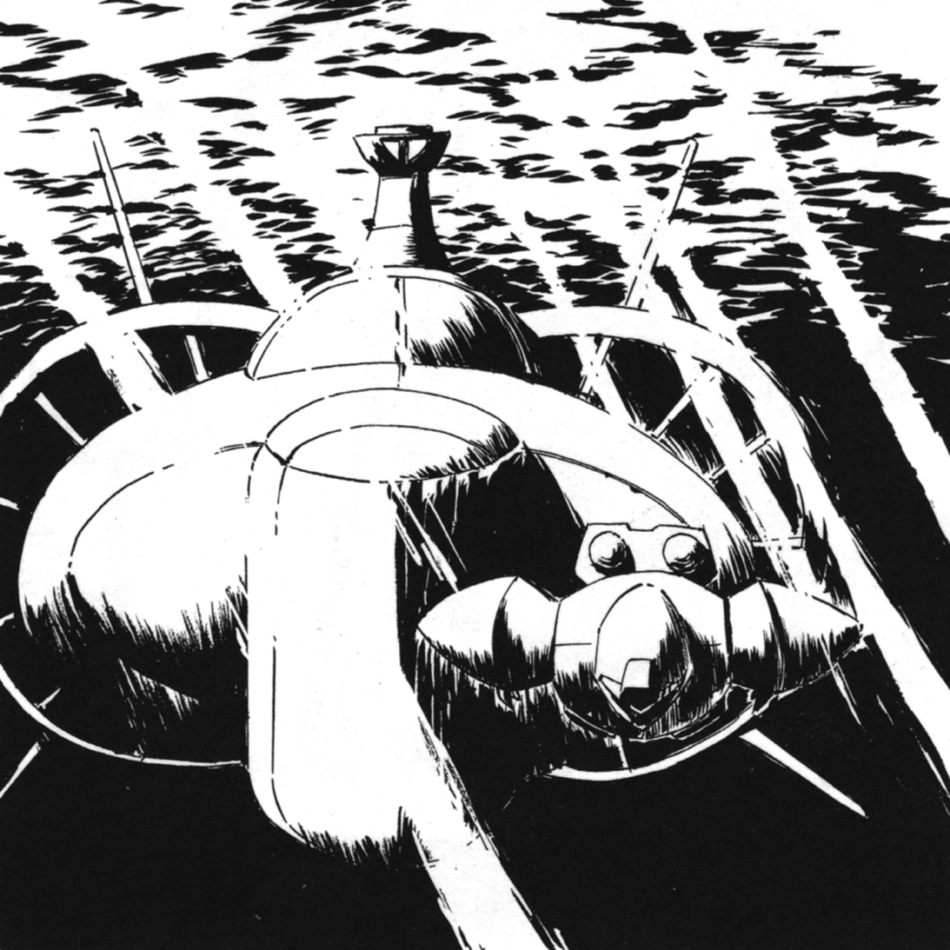
Zeon Forces Submarine Fleet: The Jukon are refit Federation submarines seized from the California base so that they could load mobile suits into the nuclear silos. The Goggs were brought from Side 3 with the intention of fighting on Earth. Later amphibious mobile suits would be produced exclusively at facilities on Earth.
In order for the Zeon to successfully launch their land-based advance operation “Javelin” against the Middle East, it was necessary to eradicate the Federation Fleet in the Mediterranean. If the supply forces behind the African Front were subjected to an attack by powerful carrier-based aircraft from the Mediterranean Sea, or if reinforcements made landfall from Federation ships, the operation would not succeed.
As such, the Zeon Forces called for a submarine fleet from far away America, for “Operation Trident.” With their first amphibious mobile suit “Gogg” loaded on the Jukon submarines, they were about to completely destroy the Federation carrier fleet in one fell swoop.
The battle was exactly as it appeared to be: a battle with the Zeon underwater and the Federation on the water.
In the end, as stated earlier, Operation Trident was an overwhelming victory for the Zeon Forces.
The Federation Fleet also fought well, but it was at a disadvantage because it did not know that Zeon had put amphibious mobile suits into practical use.
The Federation Fleet, which thought the Zeon Forces was solely comprised of submarines, questioned unfamiliar propulsion sounds, but figured it was the sound creatures in the sea. When they realized it, Goggs had penetrated inside the fleet’s ring formation, and a torpedo was fired off toward an aircraft carrier. In the end, the Goggs attacked the destroyers and other vessels using their claws and mega particle cannons.
The Federation later perfected tactics (torpedoes, depth charges, etc.) that were effective against amphibious mobile suits. Originally, amphibious mobile suits were weapons created to attack port facilities and were not adept at attacking ships. However, in the early stages of the war, many Federation ships were passively sunk by these such attacks.
![]()

The Federation had two ships in the Mediterranean, the Himalayan-class carrier Venice and the Helicopter Aircraft Carrier Antonio Gaudi (pictured is the Venice). The two ships were the main force of the Mediterranean fleet and were active in submarine (Jukon) hunting until they were sunk by Goggs. In underwater warfare where sonar is predominant, even under Minovsky conditions, conventional weapons could be utilized to fight.

A Federation anti-submarine patrol craft (ground base aircraft) at the time. It demonstrated its power in Jukon hunting. The Federation had four squadrons (32 units) of this aircraft in the Mediterranean theater. During the battle period, though unconfirmed, it is said that these aircraft also destroyed the Goggs by dropping torpedoes.

An amphibious mobile suit developed by the Zeon Forces. Originally it was a suit intended for raids on ports and such, but it could also be utilized in naval battles. They were loaded onto Jukon submarines for transport and were equipped with torpedoes for naval battles. This battle was the first time they were introduced into combat.

The combat lessons from Operation Trident was mainly researched by the Zeon Forces and would be utilized later on in development of amphibious mobile suits (such as the Z’Gok) and underwater mobile suit tactics. The results blossomed in the Battle of Midway that occurred in the Pacific Ocean in August. The Zeon Submarine Fleet, which consisted of Goggs and the new model Z’Gok, had sank the Federation’s Pacific Fleet off the coast of the Midway Islands.
It was four days after the start of the operation.
We were still making good progress. Even in the desert with little to no shelter, Federation tanks, buggies and missile cars were proven to be no threat to our Zaku. It was all thanks to the Zaku’s thick armor, the power of its machine gun and the superiority of the mobile suit to freely change perspective.
This fight, after all, seemed to be going rather smoothly.
However, right after that, our minds changed completely. Out of the blue, our cockpit monitors started to make a noise.
“A large number of Feddie aircraft are inbound!”
“Say what?!”
“Enemies are not attack aircraft. I repeat, the enemies are not attack aircraft. They’re heading towards the Feddie frontlines.”
Transports…? They appear to be Medea type. Or so the communications between Battalion Headquarters and the Air Force led us to believe.
What was going on?
“Preposterous… airborne resupply in the middle of a battle? Are these guys out of ammo?”
“They can’t be, there’s too many of them.”
Just then, I could finally see them: a bevy of Federation transports and escort aircraft in an imposing formation.
Something was steadily being jettisoned from the transports.
“What are those?!” I yelled out without as much as a second thought.
A large number of white parachutes blossomed across the gray-white desert. Hanging from each of them was an unfamiliar machine. It looked like a tank, but it wasn’t a vehicle. It was much larger, just like our Zaku.
My hair stood on end when I thought about it.
“The enemy.”
The battle had begun just up ahead. Our Magella Attack forces seemed to be bearing the brunt of it all.
“They got the platoon leader!”
“Dammit, by one of those bastardized mobile suits nonetheless!”
However, those unsightly mobile suits, a machine that placed the upper half of a mobile suit on a large tank and mounted cannons on it was quite good. Their pilot’s shots were also accurate.
Had we of fought calmly, we would’ve been able to fight a little longer. However, after five months of fighting, we encountered our first enemy, and they weren’t very far from us.
“Dammit!”
My Zaku vibrated from the impact of a nearby projectile. When I looked around, it seemed like most of the Magella unit had been taken out.
This is bad!
“You think I came down to Earth to bite it in a place like this?!”
I moved my suit towards the enemy, and just started pulling the trigger.
“By some damn Feddie imitation mobile suit nonetheless?!”
In the end, whether it was determined that they weren’t suited for close combat against us, the imitation mobile suits avoided combat and retreated. However, the half hour battle resulted in the destruction of our Magella squadron. We, on the other hand, were reeling in shock of the appearance of our first enemy mobile suit, even if it was an imitation.
The Federation had already cut into an area that was considered to be dominated by the Zeon. We’d won this time, but the next time…
Late as it may be, it may have been a challenge from the Federation.
![]()
In this battle, Federation mobile suits were put introduced into combat for the first time. However, while their legs were caterpillars and the upper half of the torso was equipped with cannons, it would be better to call it a pseudo-mobile suit.
The Federation, which picked up intel on Zeon mobile suit development, started researching hypothetical mobile suits like the Guntank, around U.C.0075. As of May 0079, a dozen or so of these such evaluation units have been completed and some of them were based at the Tel Aviv factory in the Middle East theater.
There, these units have started unit operation tests which assumes actual combat, while exploring practical uses for mobile suits and at some point they would take a formal path toward mobile suit development.
In the end, while operational data was obtained to some extent, production was discontinued and machines with a lower body changed to a walking system was developed, gradually bringing it closer to that of a mobile suit (*1). However, once the war began and data started to be collected from captured Zaku, Federation mobile suit research was drastically accelerated. As a result, the meaning of the Guntank as an experimental mobile suit development gradually faded. Of course, the operational results of these suits ultimately led to the development of the RX-78 Gundam and RGM-79 GM.
(*1) In fact, more complete types were mass-produced during the middle and later parts of the war as makeshift weapons until the GM and what not were completed.
To note, the Guntank unit who participated in this operation were put on the battlefield around Alexandria via airdrop with Medea’s and was overwhelmingly successful against the Magella Attack. Unfortunately, no combat records with the Zaku was recorded, but the combat records was also fed back to the RX-78. Although all the pilots were excellent test pilots, it was a fairly decent debut for them.

![]()
The battle ended in victory for the Zeon Forces.
In space and subsequently even on the ground, it was proven that tanks and aircraft alone couldn’t mount a resistance against mobile suits. Mobile suits, with their huge bodies as weapons, crushed Federation tanks, aircraft and bases at random. They also employed diversionary tactics so they didn’t inflict damage to their own forces. One week later they invaded the Lepanto region and destroyed the Federation Command there.
This battle seemed to prove that the speed of mobile suit attacks on the ground far surpassed the speed of conventional attacks. If it had not of been for the delay of their support units, the operation may have been rolled out more rapidly. Since there were no Gaw attack carriers in this area and because the Federation had control over the Mediterranean, all of the Zeon’s main forces were forced to travel over the desert.
During Operation Trident on the other hand, one of the first Gogg units dispatched nearly single-handedly wiped out a slow-moving Federation fleet. No damage occurred aside from the sinking of one Jukon prior to withdrawing (and one Gogg went missing during the operation, but according to records on the Zeon side, it was sunk in an accident).
The Federation was defeated a second time and there was nothing good for them aside from a portion of their forces making a good showing.
![]()
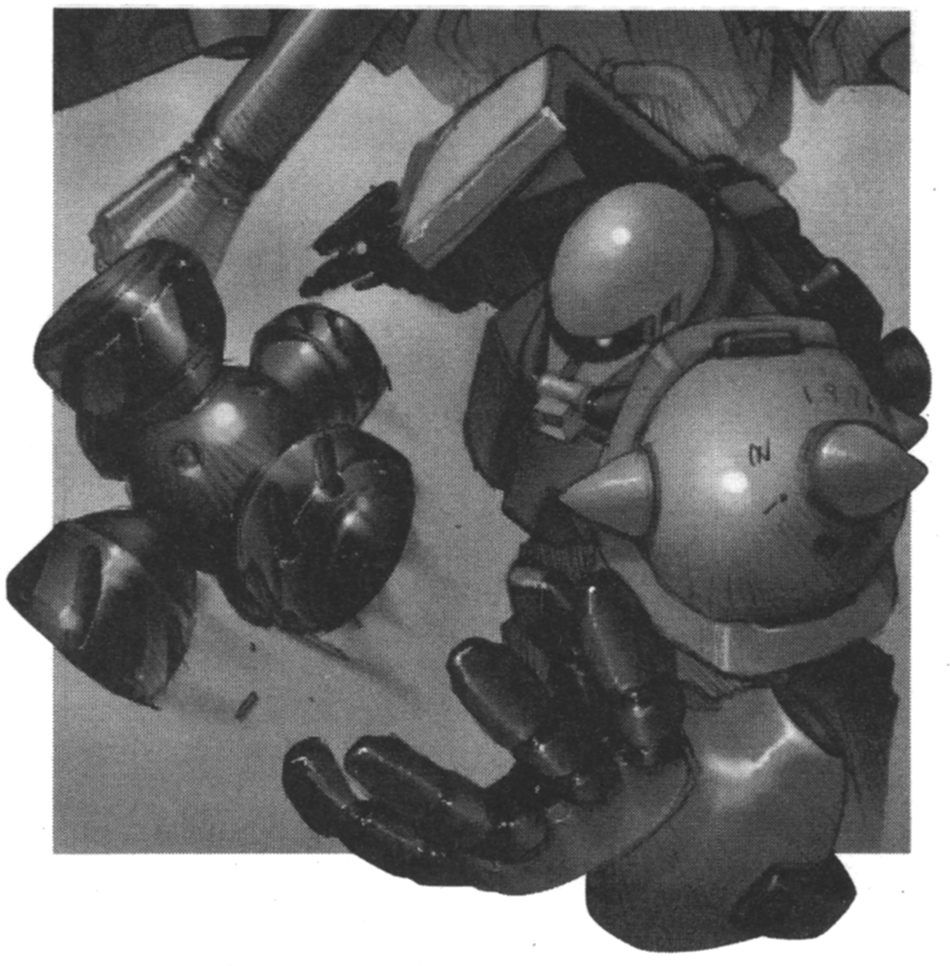
While the operations were a success, damage inflicted on the Zeon side were by no means minimal. The removal of troops in urban areas and air raids by aircraft caused damage to mobile suits, support troops and rearguard that couldn’t be ignored.
This meant that the Federation was gradually acquiring anti-mobile suit tactics. In addition, the Zeon soldiers predicted that the military power of the Federation (the amount of soldiers) was becoming unmanageable. In particular, effective tactics by the Federation aircraft (the way mobile suit hunting units attack at the same time in formation against lone mobile suits) have shaken mobile suit pilots.
As a result, the Zeon Forces succeeded in this operation, and despite gaining the resources and interests of the Middle East, they consumed an enormous amount of supplies and lost the ability to strike in the next planned operation. Other regional operations that took place at the same time (such as “Operation Blue”), ended with similar results, and the Zeon would suffer from chronic shortages of troops and supplies. At the same time, while battle lines were expanding, supplies from the homeland that had been prepared in advance, were beginning to be exhausted, and they were reaching the breaking point of their offensive.
The Zeon Forces strengthened their production system on Earth (mobile suit production was also started on the surface) and prepared for what lie ahead. But since then, the front lines of various battles was reaching a stalemate and the previous time for the Zeon Forces to win these battles was gradually slipping away.
On the other hand, for the Federation, valuable time was given back for them to mount a counterattack.
